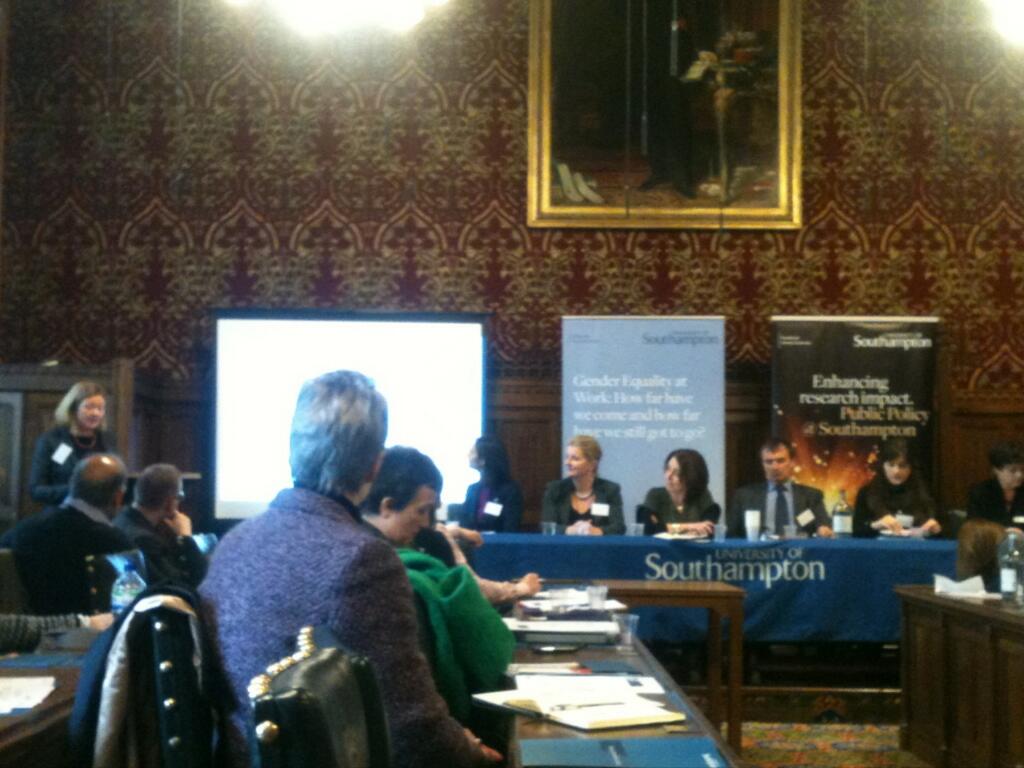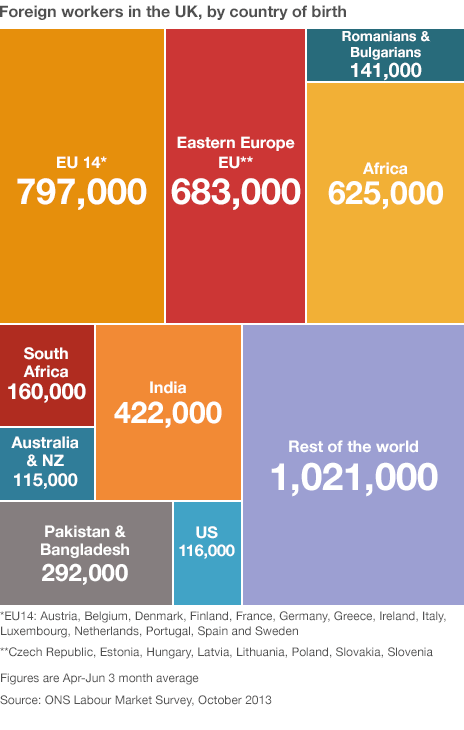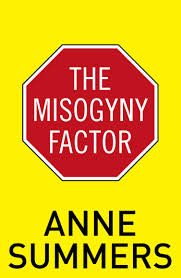storify by Roxanne Persaud
Tag Archives: Equality
Self-employment and the feminist future – the women’s cooperative WeiberWirtschaft
Since the beginning of the economic crisis in 2008, there has been a significant increase of women’s self-employment. However, women are still under represented among the self-employed. Obstacles to female entrepreneurship include lack of capital and affordable office space, in particular for small organizations. The women’s cooperative WeiberWirtschaft (women’s economy) was founded to address these problems and enable women to become economically independent. The idea to create a cooperative emerged in the 1980s when a small group of recent graduates and post-graduated discussed the idea of a feminist economy and money cycle. Based on a lot of un-paid voluntary work and significant negotiation skills with a variety of stakeholders the idea of a self-organized center for women founders became reality. Over the course of twenty-five years, the cooperative raised the necessary funds to buy, renovate and extend a historic building (the former socialist cosmetics factory VEB Kosmetik) offering social housing in addition to workplaces. In 2014, the cooperative houses 60 enterprises comprising 150 workplaces. Furthermore, a number of services were established that support the women entrepreneurs, including day care facilities, micro-credit services, a conference center and a mediation unit. In addition, in 2006 the ‘Center for Women Establishing New Businesses’ (GZ) was founded as subsidiary organization. It provides information, consultation and networking opportunities, has so far been contacted by 10.000 women and is supported through the European Social Fund.
The WeiberWirtschaft (WW) is an unusual feminist organization as it is primarily an economic organization rather than a cultural or political organization. Furthermore, it represents a ‘real utopia’, a concept that refers to organizations which are guided by the moral principles of equality, democracy and sustainability. The organizational structure of the cooperative and the low membership shares ensure equality and democracy. Each member – no matter how many shares she owns – has the same voice. Sustainability was a guiding criteria during the renovation and extension of the building. Furthermore, the cooperation engages in intersectional feminist practices: local democratic practices, cooperation between state and community, as well as democratic practices in the transnational context.
What factors and paradoxes contributed to the success of WW and how does this project reflect and inspire feminist transformations?
One of the most important lessons that WW offers is the readiness to cooperate with diverse groups and individuals – or at least to consider it. Social movements, including women’s movements are not always willing to reach out to potential allies and often engage in exclusionary solidarity. The openness to negotiate and to seek support from a range of stakeholders does not mean selling out – the tightrope walk and compromises were (and continue to be) embedded in extensive discussion processes.
Independence plays a decisive role for assuring the integrity of the organization. In my opinion the extensive volunteer work of the founders and other members of the WW is crucial in this respect. The importance of voluntary work for an organization that creates income opportunities for women may seem paradoxical. WW has been very successful in creating jobs – primarily through the creation of affordable offices and work spaces, but also because some of the volunteer service rendered in the administration of the cooperative could be converted into paid jobs. The pivotal role of volunteering assured that the WeiberWirtschaft has not been co-opted and remained independent and true to herself. Moreover, the boundary between paid work and volunteering is extremely thin as the full-time staff have also put a lot of volunteer service in the WeiberWirtschaft. The volunteers have invested a lot – not only time but also money – but they have also gained a lot. Not just an internationally prominent cooperative, but they have also learned a lot, gained skills and experience and thus qualified themselves. The founding of WW documents realism and vision, wit and humor, but also the lust for power and creating an organization. WW is a “learning organization”, members engage critically with themselves and their environment and are very good at finding resources and the support of experts.
One of the most important lessons is certainly that success is not a zero sum game, but that different groups can benefit if one of them is successful. For example, media attention for WW is good for the tenants. Furthermore, the founders’ center does not only benefit the tenants of WW, but women’s companies worldwide. This demonstrates that economic efficiency does not automatically imply competition.
The WeiberWirtschaft is embedded in the transformations of German, European and global women’s movements. The European Union and the United Nations women’s conferences presented transnational opportunity structures that could be used for the implementation of women’s policy demands. An affinity between (liberal) feminism and neoliberalism has been noted: In a tricky way, the demands of women’s movements for self-determination, self-reliance, individual freedom and autonomy are compatible with the logic of globalized markets. What does that mean? Neoliberalism involves the transfer of tasks that were previously the responsibility of the state to private sector or civil society. In addition, neoliberalism is characterized by an emphasis on personal responsibility and efficiency. These features coincide with feminist demands for self-determination and open up possibilities for women’s NGOs and gender consultants. These changes have been described as a shift from state to market feminism. While it is a welcome development that the expertise and services of feminists are paid adequately, the reliance on project and performance-bound funding encompasses the risk of co-optation and depoliticization. As a feminist organization and ‘real utopia’ WeiberWirtschaft is well positioned to practice system-criticism and represent an alternative to lack of solidarity of emancipation interests.
I am anxious to see if and how the WeiberWirtschaft will return to their original idea, the feminist money economy, and to make the earned surplus available to — for example — feminist projects, single mothers, and to people and businesses in the Global South. This would mean that WW would leave market feminism behind and represent an alternative to neoliberal practices, not only by enabling women to become economically independent, but also through the redistribution of resources and re-evaluation of different forms of paid and unpaid work.
Silke Roth is Associate Professor of Sociology in the Department of Sociology, Social Policy and Criminology at the University of Southampton, her research interests include feminist organizations and coalition building. She has observed the formation of the WeiberWirtschaft for over 25 years and is a shareholder of the cooperative.
Migrant Workers in the UK – it’s time to talk
If the people who study elections are to be believed the UK Independence Party may take a second parliamentary seat in the Rochester by-election on 20th November. Mark Reckless, the UKIP candidate has made much in his campaign of the need to ‘get a grip’ on migration into the UK and has perpetuated ideas that migrant workers are a drain on the British economy and welfare state. A report in the Independent quoted Nigel Farage, the UKIP leader and MEP as saying that Britain was the “cheap labour economy of the European Union” as a result of “uncontrolled” levels of migration.
Against this recent research analyses by Professor Christian Dustmann and Dr Tommaso Frattini from UCL’s Centre for Research and Analysis of Migration show that skilled migrant workers from the EU have boosted the British economy by some £20bn over the past decade. This reflects earlier research conducted by Pauline Leonard and Derek McGhee of the Work Futures Research Centre, University of Southampton which revealed the economic benefits brought by EU migrants from the Accession States to the Solent Region.
So what is the truth about migrant workers in the UK – are they a drain or a gain?
We know from data provided by the Office for National Statistics that there have been recent rises in migration into the UK, and that much of this has come in the form of people from the recession-hit European countries Spain, Portugal, Italy and Greece, and Poland. Net migration from the EU has reportedly reached its highest level since 1964. (The Guardian, Thursday 27 February 2014)
But are these people really “all on benefits” and “taking British jobs” ?
Uncertainty and change in work, economy and society are core issues for us here at the WFRC and so these debates and questions about migrant workers fall clearly within our remit. Earlier this year we learnt about the TUC’s campaign, begun in the South West, which attempted to stand up to the ‘tidal wave of hysteria’ about migration and provide information to bridge the gap between public perception around these issues and the reality. Inspired by their ‘Truth, Lies & Migrants’ campaign we decided to convene our own panel of experts to look at interdisciplinary research, policy and evidence about migration, population patterns and employment in the UK. This idea has grown into a half day symposium on the theme of ‘Migrant Work Futures’ to be held on Tuesday 25th November at Westgate Hall, Southampton. We are delighted to have a stellar line up of academics who are researching and contributing to debates on migration and work who will speak alongside representatives from the Trade Union Congress. We will hear evidence and perspectives from Political Science, Geography and Social Science, learn about the TUC campaign, and, we hope, have a contribution from a local MEP. But most of all we will have a lively and informed debate about Migrant Work Futures based on scholarship and science rather than hyperbole and tabloid headlines.
This event is free but prior booking is required:
We look forward to seeing you on 25th November.
Qualifications, Skills & Gender
Author: Dr Suzanne Reimer, University of Southampton
In early September, the BBC news website ran a story with the headline ‘Women may take best jobs by 2020.’ Reporting on evidence from the UK Commission for Employment and Skills (UKCES), the BBC claimed that “men could struggle to get highly skilled jobs because women are increasing skills and qualifications at higher rates.” (BBC News: Women may take best jobs by 2020, say researchers).
Phrased like that, that the acquisition of qualifications appears as a zero-sum game in which women’s apparent attainment directly hampers the position of men. This representation is potentially damaging for gender equality campaigning, given the extent to which it promotes antagonistic relations between men and women and implies that any improvements in the labour market position of women will be at the direct expense of men.
It is important to evaluate more of the detail contained within the August 2014 UKCES report. This document—in fact produced to compare UK skill levels with those of other countries—had extrapolated from historical trends in order to make predictions about future UK qualification levels. These projections appeared to reveal clear gender differences. Although in 2012 the proportion of men and women with relatively low qualification levels (GCSE or below) was similar, it was predicted that by 2020 this gap would widen. That is, a lower proportion of women but a higher proportion of men would fall into the ‘low qualifications group’ by 2020. In the middle qualifications group (from A-level to undergraduate degree completion) women also were predicted to outpace men by gaining higher levels of qualification. Interestingly, gender differences were reversed for qualifications at postgraduate levels and above: here a growing proportion of men (and a greater proportion of men than women) were predicted to achieve higher level qualifications by 2020. On the basis of this evidence, then, gender divisions are by no means uniform: not all women are increasing their qualification levels relative to (all) men. By extension, the labour market positions achieved by women on the basis of qualifications will also be highly varied.
One of the limitations of the UKCES analysis is that formal qualifications are used as a proxy for skill more broadly. Yet as feminist researchers consistently have identified, the idea of ‘skill’ itself is highly gendered: skills are differently valued depending upon whether they are possessed by men or women. Both now and historically, work done by women often hasn’t been considered to be ‘skilled’. At some times, in some places and in some sectors, formal qualifications may have advanced women’s labour market position, but in other circumstances inequalities persist even when women possess equivalent levels of qualification relative to male contemporaries. For example, the dominance of men in the UK design sector (particularly at senior levels) has endured despite a growing number of women enrolled on undergraduate and postgraduate design courses through the last two decades, as well as some level of expansion in the number of women in junior design posts.
It is important to consider the specificities of skill definition within individual labour market sectors. Within creative industries such as design, formal qualifications may be seen to be important, but design skills also are judged informally. Employers assess job applicants’ abilities in ways beyond simply their level of qualification. Informal evaluation—such as the extent to which employers perceive and assess applicants’ ‘fit’ within an existing work force—clearly can have negative implications for gender as well as ethnic diversity across many jobs. However creative ‘skills’ are often constructed as in some way inherent—as deriving from innate capabilities. In arenas where intrinsic or bodily ability is perceived to form a central part of skill, the potential aptitude of different bodies can be evaluated unequally. For example, in product design, the capacity to construct a physical prototype, to manipulate materials or even to use a hammer is often coded as essentially masculine, and a stereotyped separation of gender boundaries emerges.
The second half of the September BBC news report did in fact allude to the potential disconnection between formal qualification and evaluated ‘skill’: it notes that “… for many women their higher qualifications are not leading to better pay and jobs”. This latter point might more appropriately have been placed as the headline: why is it that women’s qualifications are undervalued and what challenges might be made to this state of affairs?
Dr Suzanne Reimer’s work on gender, design and skill recently was presented at the Third European Colloquium on Culture, Creativity and Economy, Amsterdam, October 2014.
WiSET/WFRC Campbell Lecture: So who was Ishbel Campbell?
 One month today, WiSET will be hosting the annual Campbell Lecture, in celebration of women in STEM subjects. This year’s double bill is co-sponsored by the WFRC, but it’s surprisingly hard to find information on who Ishbel Campbell was, and why we have a lecture named after her. WFRC coordinator Jo Corsi decided to find out more.
One month today, WiSET will be hosting the annual Campbell Lecture, in celebration of women in STEM subjects. This year’s double bill is co-sponsored by the WFRC, but it’s surprisingly hard to find information on who Ishbel Campbell was, and why we have a lecture named after her. WFRC coordinator Jo Corsi decided to find out more.
Ishbel Grace MacNaughton Campbell was the 9th child of Reverend John Campbell and Elizabeth Balfour Renwick, of Newtonmore, Scotland. [1] She was a pioneering chemist, who spent much of her academic life at the University of Southampton, and can be considered to be a fantastic influence on young chemistry students (particularly female students) during her time here.
Ish, as she was known, was a science student at the University of St Andrews from 1923 – 1927, and graduated with First Class Honours. Following this she was able to take up a place as a research student, with the support of a Carnegie Fellowship. Her PhD was awarded in 1931, although she did not attend graduation as she was at that time working at Cornell University, funded by a Commonwealth Fellowship [2] (one of the first awarded to a woman,[3] now known as a Harkness Fellowship [4]).
After a brief period at Bedford College, which was the first higher education college for women in Britain, Ish joined the Chemistry department at Southampton in 1938. [3] Whilst at Southampton she was responsible for teaching organic chemistry, [5] as well as undertaking her own research. She is most well-known for her work on organic compounds of the Group V elements, [6] in days before modern spectroscopic techniques were available. Former PhD student, Martin Hocking recalls: “Ish was experimentally well known for her ability to coax more-or-less pure crystals of a new substance from tiny amounts of solution of an unlikely looking, gluey reaction product. It was rumoured that her success was the beneficiary of traces of her cigarette ash that provided nuclei in the crystallization test tube to help initiate the crystallization process aided by temperature changes and by scratching the side of the tube with a glass rod.” [3]
Ish was popular with her students, who remember a caring and supportive lecturer. Brain Halton, Emeritus Professor of Chemistry at the Victoria University of Wellington recalls: “Ishbel Campbell waited with us outside the examination hall checking that we were all there and wishing us the best. If one of a class failed to appear, she would promptly rush away to bring the errant being in”. [5]
Ish was physically active, and is known to have enjoyed long walks in the hills around Southampton. She also played tennis into her 80s, [3] in addition to representing the University of St Andrews as an undergraduate. [2] She was a regular sight at the University well after her retirement, with Hocking recalling that she never really retired: “Long after her official retirement Ish enthusiastically gave us a tour of the new medical faculty at Southampton and where she had volunteered to teach courses in chemistry to new medical students. ‘It keeps me young’ she said, and it certainly worked!”. [3]
After her arrival at the University of Southampton, Ish lived in Highfield for the remainder of her life, first in Glebe Court, [7] and later in Orchards way. Ish was elected Fellow of the Chemical Society in 1940, [7] and was later promoted to Reader. [6] Ish passed away at a residential home in Blenheim Avenue, Southampton in October 1997, at 91 years of age. [8]
Today, there are few reminders on campus of a woman who spent well over 50 years at the University of Southampton. The undergraduate teaching facilities on level 5 of the Chemistry building are named the Campbell Laboratory, and are situated where her own research would have taken place. [4] On March 19th, we will celebrate diversity with the annual Campbell lecture, hosted by WiSET, with speakers Curt Rice and Athene Donald. I hope a few people will take a minute to think of the “slight, but physically tough and proud Scottish spinster” [3] in whose name we are gathering.
Tickets to the lecture are available (for free) through Eventbrite.
References:
- Family Search Community Trees, accessed 10/02/2014
- The McNaughtons and the University of St Andrews, Alasdair McNaughton, accessed 10/02/2014
- Rayner-Canham, M. and G., (2008) Chemistry Was Their Life: Pioneering British Women Chemists, 1880-1949, London: Imperial College Press
- Records of Harkness Fellowships of the Commonwealth Fund: Australian Division, accessed 10/02/204
- From Coronation Street to Consummate Chemist, Brian Halton, accessed 10/02/2014
- Chem. Brit., April 1998, 34, 72
- Proc. Chem. Soc., 1940, 10
- The London Gazette, 23rd February 1998, accessed 10/02/2014
With thanks to Geoff and Marelene Rayner-Canham for sharing their notes.
Out with the old…?
 This month’s Work Thought blog post is provided by WFRC Chair Professor Pauline Leonard.
This month’s Work Thought blog post is provided by WFRC Chair Professor Pauline Leonard.
As we leave the trappings of seasonal celebrations behind us and tip headlong into another ‘new’ year, I find myself pausing to think: just what was achieved last year in terms of improving issues of gender equality at work? In many ways I feel it can be viewed as really quite a productive time: the period immediately after our publicpolicy@southampton event on ‘Gender Equality at Work: How far have we come and how far have we got to go?’ held at the House of Commons on the eve of International Women’s Day 2013 saw the publication of several high profile policy reviews, well covered in the national media, which pushed gender workplace equality thoroughly into the public eye. So far so good-but did the reports contain any hope of positive change?
The Fawcett Society’s excellent report ‘The Changing Labour Market: delivering for women, delivering for growth’ openly questioned the current Government’s plans for growth. In short, it argued, this is leaving women behind: 60% of ‘new’ private sector jobs have gone to men, whilst almost 3 times as many women as men have become long term unemployed in the last couple of years. Even more worrying is their warning that the worst is yet to come: although women have already borne the brunt of cuts to the public sector workforce, some 75% of these are still to emerge.
No good news there then! Then, there was the House of Commons’ own report produced by the Business, Innovation and Skills Committee on ‘Women in the Workplace’. This noted the fundamental right of all of us to reach our full potential at work, and acknowledged the sheer waste in individual, social and economic terms if this does not happen. The use of ‘if’ here is of course somewhat whimsical: ‘that’ would be a more accurate conjunction. For of course, as the report goes on to confirm, after 40 years of legislation, equality of pay has not been achieved, as the gendered stereotypes governing jobs, childcare, opaque pay agreements and domination of men at senior levels continue to describe the UK’s labour market.
So, same old, same old! The Institute of Public Policy Research exploration of the promises of gender equality in their report ‘Great Expectations’ argued for a rather different approach. The chapter on women in work-entitled ‘False Promises’- intelligently suggested that the usual measurements of equality-employment rates, average pay and advancement to senior positions-are misleading. Rather, what needs to be tackled are the underlying causes of women’s disadvantage, particularly the poor quality of work at the bottom of the labour market and the impact of women’s primary responsibility for care on their employment prospects.
These are only three reports of many which appeared last year: the Centre for Women’s Democracy produced another eye-popping expose of ‘Sex and Power’ and the ways that the UK is run by men; the European Institute for Gender Equality produced an Index which revealed how work operates to the detriment of women across the labour markets of Europe, and the Women’s Resource Centre raised serious questions about the Government’s commitment to women’s equality here in the UK. Further, the relentless findings of the year’s many reports were joined by a continuous stream of evidence about discrimination produced across the media, both mass and social.
On reflection then, it was certainly a noisy year! And from this I draw some glimmers of hope for 2014. My new year’s resolution? Keep the pressure on! The Work Futures Research Centre will be contributing to this with their sponsorship of Professor Curt Rice as one of two high profile speakers at the prestigious Campbell Lecture on March 19th 2014. Curt Rice is a Fellow at the Netherlands Institute for Advanced Study. From 2009–2013, he served as the elected Vice Rector for Research and Development (prorektor for forskning og utvikling) at the University of Tromsø, where he is a professor of linguistics. He tells us that his talk will argue that the core challenge to improving gender balance is finding ways to overcome implicit bias. We can’t wait to hear more…
Holiday balancing acts: misogyny, work and leadership
This month’s post is a review of Anne Summers’ TheMisogyny Factor by WFRC director Professor Catherine Pope
The directors of the Work Futures Research Centre like the idea of work-life balance even if the demands of our working lives sometimes seem to get in the way. One of the ways I try to inject some ‘balance’ into my life is through taking holidays when I spend time reading things that are not directly related to my research work – often fiction, but not always. If I venture abroad I try to pick up a book connected to the place I am visiting and this has been a great way of discovering new things – ranging from poetry to ancient history.
This year I was lucky enough to follow an academic visit to see colleagues at University of New South Wales involved in a project about organisational performance and accreditation with a trip to Australia. I was there just ahead of the general election so the news was full of electioneering and amongst this lots of discussion about Kevin Rudd the then Labour prime minister and his predecessor Julia Gillard.
The YouTube video of Julia Gillard’s misogyny speech of 2012 had already gone viral at this point, and this was followed by some UK media notably a self-penned piece after the election (in which Labor lost) in the Guardian on ‘power, purpose and Labor’s future’. Sydney Opera House hosted a discussion between feminist writer Anne Summers and Gillard which had picked up on some of the themes of sexism and leadership that Gillard had debated in speeches and writing – and these are revisited in Summer’s book ‘The Misogyny Factor (2013) which I bought for my holiday reading.
If we in the UK are disheartened about lack of progress on workplace equality agendas then this book suggests that our sisters in Australia have even more to complain about. Summers describes how, despite pioneering workplace reforms (Australia was the first to introduce the 8 hour day) and human rights (one of the first places to grant women the vote was South Australia in 1894), Australia lags behind in supporting working women. Australian women have lower participation in work than many other OECD countries and the gap between lifetime earnings of men and women is a shocking AUS $1 million. The Misogyny Factor is not a lighthearted read – Summers documents the political and legislative history of the struggle for gender equality in and outside work, and devotes a chapter to a fairly harrowing account of the way that Julia Gillard was taunted, attacked and vilified because of her gender in politics’ ‘top job’. Thankfully the book concludes with a chapter called ‘Destroying the Joint’. The title comes from a phrase which entered the Twitter lexicon when another feminist writer, Jane Caro, decided to take on the misogynists when radio presenter Alan Jones said ”Women are destroying the joint – Christine Nixon in Melbourne, Clover Moore here. Honestly.” Caro responded with her now famous tweet, “Got time on my hands tonight so thought I’d spend it coming up with new ways of ”destroying the joint” being a woman & all. Ideas welcome.” This ignited a social media debate about misogyny – in Australian politics, in the workplace and in the street which alongside other projects like #everydaysexism has become a global conversation about gender inequality. We are hoping to add to this conversation with our Policy Briefing on ‘Gender Equality at Work : where are we now and how far have we still to go?’ which will be out soon.
Guest blog by Su White: Athena SWAN and Southampton
Su White is part of the Web and Internet Science research group in ECS. Her research interests include research-led learning, the effects of technology on education and learning, and web science.
The need and value for balanced and diverse teams and equality of treatment of all staff are two principles which might seem rather challenged in academia when the representation of female academics as a proportion of the whole is considered.nd web science.
This year has seen a widespread and continued series of small celebrations for prestigious Athena SWAN Awards around the University achieved by a range of academic areas. Six academic areas and the university as a whole have all gained bronze awards. There are three more applications in the pipeline, and two more areas are exploring the possibility of making applications.

Athena SWAN is an initiative designed to advance the representation of women in science, engineering and technology, mathematics and medicine.
Currently there are no STEMM subjects at Southampton that have equal proportions of male to female academic staff. Furthermore the numbers of female staff at higher pay grades are significantly reduced at.
The figures for the rounded percentage of female staff in STEMM is as follows: overall 41%; 49% Grade 4; 47% Grade 5; 31% Grade 6; 21% Grade 7.
This looks quite respectable, however, when you discount colleagues from medicine, health sciences and psychology the picture is less rosy. Overall 33% are female. The breakdown is 41% Grade 4; 37% Grade 5; 23% Grade 6; 17% Grade 7.
In a desire to secure recognition of good practice there has been a massive effort on campus over recent months to look at the university workplace alongside the student experience, to think about the way we balance the gender scales; and how we could do it better.
The university successfully renewed its charter this summer, and the self assessment team chaired by Professor Iain Cameron Dean of the Faculty of Medicine, have declared the ambition to achieve a silver award in 2015. There has been concerted effort by academic teams in all the academic areas involved, the work assisted by the University’s diversity and equality officer Alexander Melhuish alongside others in HR.
Despite reward and recognition of successful female academics in the University, like the rest of the sector we seem to be experiencing a ‘leaky pipeline’ where the proportion of females diminishes as we progress along the career ladder. Systematically ensuring that our processes are fair and equal for all staff and students are important activities for which the prospect of an Athena SWAN award can provide a constructive focus and motivation. Furthermore, there are some areas of academic study where the percentage representation of female students at all levels appears to be surprisingly unbalanced. Effective actions which can improve the experience of staff and students include monitoring current practice, investigating the possible causes of imbalance and remedying problem areas.
Observations that there appear to be differences between the expected progression of staff, or the recruitment of students when analysed by gender need to be made objective so that effective interventions can be identified and implemented.
This in turn may require an increase in the budget for professional development or broad brush developmental and awareness activities which are the necessary pre-cursors to organisational change.
The work of local interest groups such as WiSET (Women in Science Engineering and Technology) can be invaluable in identifying issues which need remedy. Such groups can lobby for change or raise awareness of unexpected issues.
The Bigger Picture
Equality of treatment and experience for all staff and students is essential and backed up by equality legislation, however evidence from national and international surveys suggests that there is room for improvement.
Women in the UK account for around 38% of science researchers, according to the UNESCO institute for Statistics’ 2012 report.
There are some major external drivers to make sure we get things right. Around two years ago institutions were told not to expect to be shortlisted for biomedical research grants unless they could demonstrate evidence of actively supporting women’s career progression.
And it was widely reported earlier in the month that the universities and science minister David Willets said he expected those bidding for government cash to offer evidence of ‘commitment to equality and diversity’.
In mid October the House of Commons Science and Technology Select Committee held its first evidence hearing for its enquiry into “Women in STEM’ careers. The panel will hear personal views and experiences from witnesses who have worked or are working in academia.
Gender equality is only one aspect of equality, but an awareness of current practice can impact on all facets of equality. From an institutional and societal perspective, we are denying ourselves the opportunity to benefit from the best if we do not ensure all possible participants are recruited and developed. The strengths and value to an organisation of diverse teams is widely recognised, depriving ourselves of the potential for fully balanced teams seems to be shooting ourselves in the foot – never mind the possible consequence from loss of research funding.
Sex Work Futures?
Sex work futures?
It’s the start of the new term for Universities and Colleges throughout the world. Choices and compromises have led new students to embark on courses that are likely to profoundly influence their future careers – because of the knowledge and skills they acquire, because of the networks of contacts they build and because of the previously unthought-of of possibilities that they are awakened to. Of course, universities can also influence future career choices in other ways and student clubs and societies can also play a role in developing people’s future career choices and opportunities.
So far this sounds like a dull homage to the benefits of a university education and the role of extracurricular activities in preparing for the future. Not really the stuff of a blog on work futures and, let’s be frank, potentially disappointing given the title of the blog. Not so.
Here is the thing. Last week, the annual University of Southampton Fresher’s week ‘RAG’ showcased the work of many student societies, including the University Pole Dancing Club. Now I must confess that encountering a pole dancing demonstration outside a University Students Union was, for me, rather unexpected. I was equally surprised that the display was not the subject of any protest by members of the student body, but perhaps my view on these things has been skewed by being a the University of Sussex in the 1980’s where (I am fairly certain) such things would not have been tolerated.
I know that pole dancing is now being pushed as ‘exercise’, but let’s be very clear about this. It is a form of exercise that is based on a form of sex work. This got me thinking. Am I simply a dinosaur stuck in the past? Perhaps sex work is just one more career opportunity and if some members of the University Pole Dancing club find their way into the sex industry because their horizons are broadened while at university, so be it. Certainly evidence from recent surveys suggests that sex work does have a role, potential of actual as a means of supplementing students’ income while at University in the UK. The ‘mainstreaming’ of sex work seems widespread in other developed economies.
So can we regard sex work as ‘just another job’? Is it simply a choice that some (mostly women, although by no means exclusively) choose to make, as free and legitimate as any other? Perhaps for some it is, I really don’t know. But what I do know is that sex work operates in a context that is associated with human trafficking and forms of slavery. Sex work operates in a context that relies on the objectification of other human beings in a way that is often predicated on treating them as less than fully human.
You might protest not in this country (are you sure?), not our University Club (of course not!), not pole dancing (…maybe?). Perhaps, but in my view, until the sex industry operates in a world where women are universally given equal opportunities the association between sex work and exploitation is too close for me to ever feel comfortable with pole dancing being treated as just another recreational activity or a fully informed career choice. Of course, exploitation is not confined to the sex industry and when we consider the future of work we should consider the many forms of exploitation that remain hidden to a greater or lesser extent – cheap labour in sweat shops comes to mind. Perhaps next year the Fresher’s fair could include a sponsored sweatshop in which students have to produce garments at high speed in order to get enough money for tomorrow’s food? Or would that be seen as distasteful? It certainly would not be seen as opening up a career opportunity
Some might find it reassuring, others depressing (perhaps it is both) that the club raised a grand total of £2.10 for charity at the Fresher’s fair – the lowest of any of the clubs or societies listed on the University web site.
Gender Equality at Work … an Unfinished Job
 This has been a busy few weeks for those of us interested in issues of Gender Equality at Work. First, a report produced by Women’s Aid and the Fawcett Society in May showed that current government spending cuts have hit women disproportionately hard and are threatening to reverse any gains in gender equality which have been achieved over the last few years. A key factor here is that the Coalition’s austerity measures have cut public sector jobs –the very jobs which are largely occupied by women. This has an effect on both women’s incomes and their pensions. As Vivienne Hays, Chief Executive of the Women’s Resource Centre argues, “austerity should not be an excuse for discrimination”.
This has been a busy few weeks for those of us interested in issues of Gender Equality at Work. First, a report produced by Women’s Aid and the Fawcett Society in May showed that current government spending cuts have hit women disproportionately hard and are threatening to reverse any gains in gender equality which have been achieved over the last few years. A key factor here is that the Coalition’s austerity measures have cut public sector jobs –the very jobs which are largely occupied by women. This has an effect on both women’s incomes and their pensions. As Vivienne Hays, Chief Executive of the Women’s Resource Centre argues, “austerity should not be an excuse for discrimination”.  Later in May, Harriet Harman’s Commission on the experience of older women in the workplace revealed how, of all presenters over the age of 50 on British TV, only 18% are women: fewer than one in five. Whilst 39% of TV presenters as a whole are women, the vast majority of these are under 50. Once women hit the age of 50, a combination of ageism and sexism ensures their careers are on the decline. This is in spite of the fact that a BBC survey last year found that audiences would welcome more middle and older age women on television, providing positive role models and greater gender equality (Guardian 16 May 2013 p9). In June, we celebrated the centenary of the suffragette Emily Davison’s death. Exactly a century ago, she was knocked down by the King’s horse in the Epsom Derby as she attempted to draw attention to the Votes for Women Campaign. Fifty five years later, a group of women workers at the Ford Dagenham plant, infuriated by the pay structure which blatantly favoured male workers, made history by going on strike and marching to Whitehall. Their action resulted in the women agreeing to return to work and the conception of the Equal Pay Act of 1970. Now, in 2013, despite many improvements in gender equality in the workplace, there is still a 15% pay gap on full time hours, and this almost doubles in part time roles, many of which are filled by women. As the Fawcett Society argues, it is as if from 7th November to the end of the year, women work for nothing!
Later in May, Harriet Harman’s Commission on the experience of older women in the workplace revealed how, of all presenters over the age of 50 on British TV, only 18% are women: fewer than one in five. Whilst 39% of TV presenters as a whole are women, the vast majority of these are under 50. Once women hit the age of 50, a combination of ageism and sexism ensures their careers are on the decline. This is in spite of the fact that a BBC survey last year found that audiences would welcome more middle and older age women on television, providing positive role models and greater gender equality (Guardian 16 May 2013 p9). In June, we celebrated the centenary of the suffragette Emily Davison’s death. Exactly a century ago, she was knocked down by the King’s horse in the Epsom Derby as she attempted to draw attention to the Votes for Women Campaign. Fifty five years later, a group of women workers at the Ford Dagenham plant, infuriated by the pay structure which blatantly favoured male workers, made history by going on strike and marching to Whitehall. Their action resulted in the women agreeing to return to work and the conception of the Equal Pay Act of 1970. Now, in 2013, despite many improvements in gender equality in the workplace, there is still a 15% pay gap on full time hours, and this almost doubles in part time roles, many of which are filled by women. As the Fawcett Society argues, it is as if from 7th November to the end of the year, women work for nothing!  Such issues of Gender Equality at Work are the focus of the PublicPolicy@Southampton Policy Commission currently being conducted by Susan Halford and myself. After our successful seminar at the House of Commons on International Women’s Day on the 8th March, we are in the process of interviewing a range of influential stakeholders including Kay Carberry, the Assistant General Secretary of the TUC and Scarlet Harris, Women’s Equality Officer at the TUC; Sarah Jackson and Liz Gardiner of Working Families, Baroness Margaret Prosser and Helen Sachdev of the Barclay’s Bank. The interviews will inform a Policy Briefing which will be disseminated later in the year in which the key question : ‘Gender Equality at Work : where are we now and how far have we still to go?’ will be addressed. Keep checking for further updates!
Such issues of Gender Equality at Work are the focus of the PublicPolicy@Southampton Policy Commission currently being conducted by Susan Halford and myself. After our successful seminar at the House of Commons on International Women’s Day on the 8th March, we are in the process of interviewing a range of influential stakeholders including Kay Carberry, the Assistant General Secretary of the TUC and Scarlet Harris, Women’s Equality Officer at the TUC; Sarah Jackson and Liz Gardiner of Working Families, Baroness Margaret Prosser and Helen Sachdev of the Barclay’s Bank. The interviews will inform a Policy Briefing which will be disseminated later in the year in which the key question : ‘Gender Equality at Work : where are we now and how far have we still to go?’ will be addressed. Keep checking for further updates!







